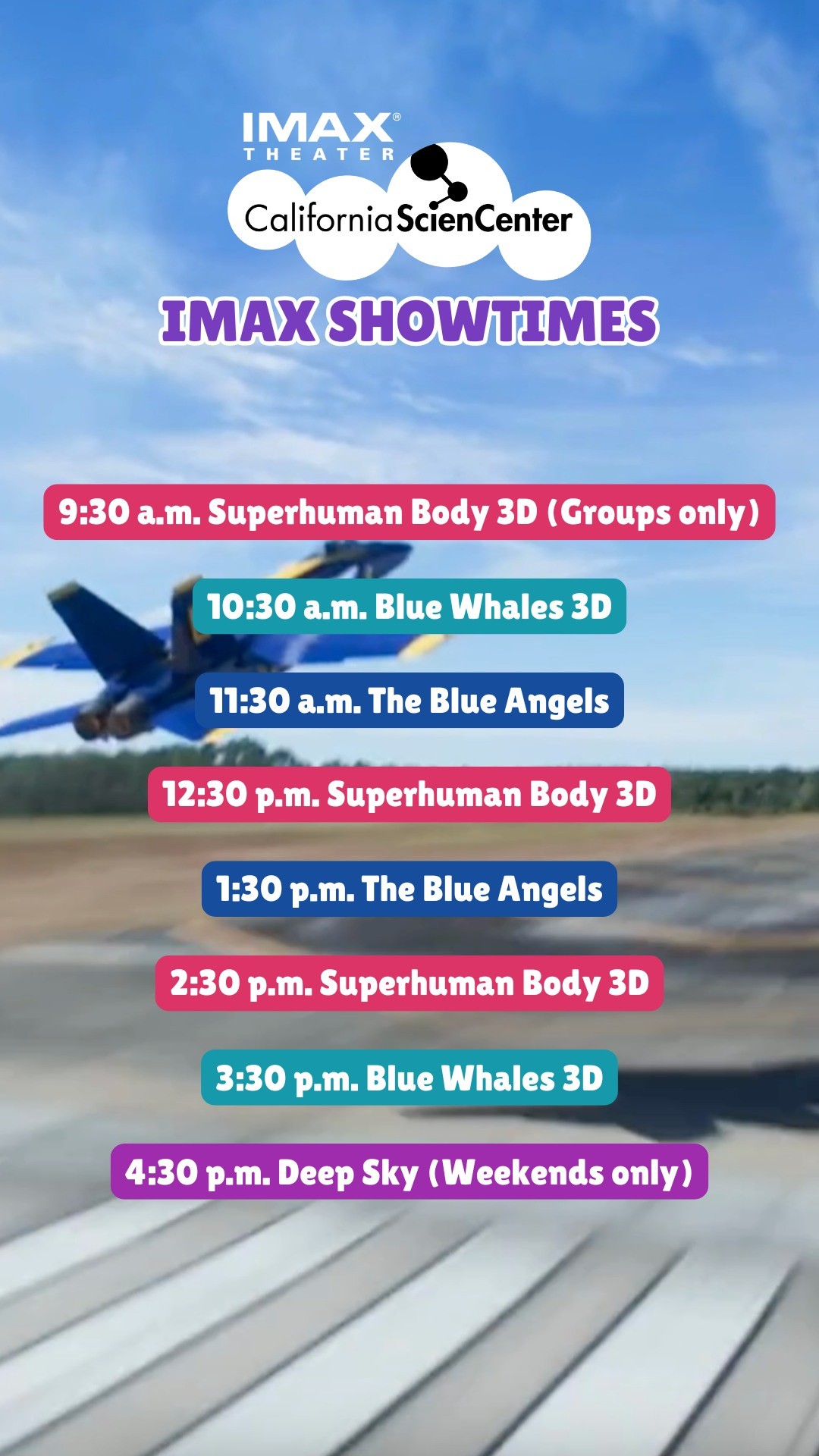- Spring break at the movies offers a thrilling way for families and individuals to engage with scientific concepts through the lens of cinematic experience in an IMAX theater.
- The captivating films at the California Science Center IMAX Theater, such as “Superhuman Body 3D,” “Blue Whales 3D,” and “The Blue Angels,” provide viewers with an immersive learning journey into the wonders of science and nature.
- Understanding the science behind cinema and the unique capabilities of IMAX technology enhances audience appreciation for the visual storytelling of wildlife and natural phenomena.
- Viewing films that highlight aspects of zoology and environmental science encourages audience thoughtfulness on topics like wildlife conservation and the interconnectedness of ecosystems.
- Encouraging participation through an engaging educational experience at cinema venues, like the California Science Center, fosters curiosity and supports lifelong learning in the fields of zoology and environmental sciences.
During spring break, many families and science enthusiasts look for activities that are both entertaining and educational. The California Science Center presents the perfect blend of excitement and learning with its IMAX Theater. Offering an assortment of breathtaking films, this venue uses large-format, state-of-the-art technology to deliver stunning imagery and sound.
With this immersive experience, spring break becomes a prime opportunity for children and adults to dive deep into the world of science. Watching science come alive on the big screen stimulates curiosity and inspires audiences to explore scientific concepts beyond what they see. Among the standout features of this cinematic journey is its focus on the natural world, bringing important topics in zoology and wildlife conservation to the forefront.
Movies like “Superhuman Body 3D,” “Blue Whales 3D,” and “The Blue Angels” are an integral part of the spring break film lineup. Each film is meticulously crafted to offer insight into natural phenomena and human capabilities. “Superhuman Body 3D” explores human physiology and the extraordinary potential of the human body. In contrast, “Blue Whales 3D” takes viewers into the depths of oceans to witness the majestic lives of these ocean giants. “The Blue Angels” shifts gears to exhibit amazing aerial maneuvers and technological achievements of human flight.
IMAX technology delivers a distinctive experience, where visual storytelling meets scientific discovery. The technology utilizes specialized projectors and screens to create high-resolution images that envelop the viewer in a more lifelike environment. This is particularly effective for films focused on zoology and natural habitats, as it allows audiences to feel as though they are truly part of the depicted ecosystem.
By bringing stories of wildlife and the environment to a wider audience, these films also highlight critical conservation efforts. The grandeur of a blue whale magnified on the giant IMAX screen is a powerful reminder of the beauty and fragility of these creatures. The film serves not only to educate viewers about the life of whales but also to underline the importance of preserving oceans and marine life. It bridges the gap between awareness and action in wildlife conservation.
This experience is enhanced by a visit to the Concession Stand, where moviegoers can enjoy popcorn and other delightful treats, making the outing complete with both sensory and educational fulfillment. Nevertheless, the educational value is the primary driving force for an IMAX visit during spring break.
Through captivating imagery and compelling narratives, these films encourage audiences to appreciate and respect the natural world. They provoke thought about the sheer diversity and complexity of life on Earth and the role humans play in nurturing and conserving biodiversity.
Watching these films within the larger context of a science center provides an anchor point for discussions on current environmental issues, such as habitat loss, pollution, and climate change. The films function as a narrative sparking discussion and learning, with the auxiliary exhibits complementing the lessons from the screen.
Families and groups attending the IMAX at the California Science Center during spring break are participating in a tradition of cinematic education that ties them more closely to the global conversation on science and conservation. As children and adults alike watch these stories unfold, they’re not only entertained but inspired to think critically about the planet and its future.
In bringing science and wildlife narratives to life on the grand IMAX screen, audiences are invited to explore new realms of thought and discover the magnificence of nature’s tapestry. The science of cinema meets the science of nature, creating a dynamic and impactful experience that remains with viewers long after they leave the theater.
*****
Source Description
Spring break is the perfect time to go to the movies! 😎🍿 Watch science come alive in our IMAX Theater with an assortment of incredible movies to choose from!
𝐂𝐚𝐥𝐢𝐟𝐨𝐫𝐧𝐢𝐚 𝐒𝐜𝐢𝐞𝐧𝐜𝐞 𝐂𝐞𝐧𝐭𝐞𝐫 𝐈𝐌𝐀𝐗 𝐒𝐡𝐨𝐰𝐭𝐢𝐦𝐞𝐬:
𝟗:𝟑𝟎 𝐚.𝐦. Superhuman Body 3D (Groups only)
𝟏𝟎:𝟑𝟎 𝐚.𝐦. Blue Whales 3D
𝟏𝟏:𝟑𝟎 𝐚.𝐦. The Blue Angels
𝟏𝟐:𝟑𝟎 𝐩.𝐦. Superhuman Body 3D
𝟏:𝟑𝟎 𝐩.𝐦. The Blue Angels
𝟐:𝟑𝟎 𝐩.𝐦. Superhuman Body 3D
𝟑:𝟑𝟎 𝐩.𝐦. Blue Whales 3D
𝟒:𝟑𝟎 𝐩.𝐦. Deep Sky (Saturdays and Sundays only)
❗Don’t forget to grab popcorn and other delicious treats from our Concession Stand!
🎟️Grab tickets at californiasciencecenter.org/imax


